Sandigh Dāshī/ Yāzli Dāshi/ Shishehصندوق داشی / یازلی داشی / شیشه
Location: Sandigh Dāshī is located 40 km northeast of Ahar in northwestern Iran, East Azarbaijan Province.
38 36′ 27″ N 47 21′ 59” E
Sandigh Dāshī/ Yāzli Dāshi/ Shisheh
Historical Period
Iron Age / Urartian
History and description:
The archaeological site is located 3 km to the east of the present-day village of Shisheh, 40 km northeast of Ahar. Sandigh Dāshi (the box stone) is the name of an Urartian rupestral inscription known also as Yazili Dāshi (the written stone) and Shisheh because of its proximity to a village of the same name. The place where it is located is the most inconspicuous. The inscribed panel lies on one of the rocks at the top of the mountain, which has been flattened to receive the inscription. To reach the place one has to take the Ahar-Kaleybar road for 20 km to the point where there is a bifurcation. Then a track goes off to the west passing by the villages of Kūsalar, Babajan, and Shirbit. From the latter village, one needs to continue driving in the northwest direction passing by the village of Shisheh. The track circumnavigates the mountain. There is a fair amount of hiking from the northern flank of the mountain to the summit where the inscription is located (figs. 1 and 2).
In contrast to the desolation of the place, the inscribed panel lies near the ruins of an Iron Age fort that is part of a chain of fortifications in the region. The remains of the fort consist of ruined walls built with large, partially dressed stones (fig. 3). Within the walled area, there are, at least, two buildings with rooms (Bashash Khanzaq, Biscione, Hejebri-Nobari, and M. Salvini, “Haldi’s Garrison-Haldi’s Protection,” pp. 26-31). The main entrance to the fort was possibly in the north. A nearby spring on the southeast side of the mountain was probably the fort’s main source of water (Omrani and Rahmatpour, Qal’ehā va esthehkāmāt, p. 76). Scattered potsherds of Urartian red ware, as well as some Parthian and Sasanian ceramics (figs. 4 and 5), can be seen on the slopes and summit of the mountain (Omrani and Rahmatpour, Qal’ehā va esthehkāmāt, pp. 79-80, figs. 33/1-33/2). There is also a nearby Late Bronze Age/Early Iron Age cemetery (fig. 6) with tombs marked by stone circles (Bashash Khanzaq, Biscione, Hejebri-Nobari, and M. Salvini, “Haldi’s Garrison-Haldi’s Protection,” p. 26).
The inscribed panel, facing south, is 140 cm long and 85 cm wide with a depth of 7 to 8 cm. The signs are roughly 4 cm tall (figs. 7, 8, 9). In recent times, the cliffside around the inscription was unfortunately blown up by treasure hunters (figs. 10 and 11). As a result, the thin layer that once bore most of the signs flaked off. Without the help of laser scan imaging, it is impossible to copy and/or read the inscription with the naked eye (Dara, Katibehāy-e mikhiy-e urartu’i, p. 121). Fortunately, the text of the Sandigh Dāshi inscription is similar to those known from the Nashteban and Razliq inscriptions. The cuneiform inscription is in Urartian in 16 lines, of which only five broken lines have survived. The inscription was carved during the reign of Argishti II (714-680 BC) who is known for his constructions and royal inscriptions. Mirjo Salvini gives the following transliteration in his corpus of Urartian texts, (Corpus dei Testi Urartei, p. 544, A 11-06). The inscription is fully discussed and published with commentary by Salvini in 2001 (“Haldi’s Garrison-Haldi’s Protection,” pp. 31-37). The inscription is accessible online (http://oracc.org/ecut/Q007097/). The adapted translation in English is by Maryam Dara.
Transliteration:
1.Dḫal-di-ni-ni al-su-i-ši-ni EN-si-ni-ni
2. mar-gi-iš-ti-še mru-sa-ḫi-ni-še a-li a-šá-di
3. [KURar-ḫu]-ú-e iš-ti-ni-a-ṣi [ka-r]u-bi
4. [KÚR] KURú-šú-[lu-ni] KUR[-ni KURbu-qu-e KUR-ni ku-ṭi5]-a?-di
5. [pa-ri x x x x x x x] ka-ru-bi x x x bi-di-e
6. [ḫa?-a?]-ú-bi [x] x [ x x x x x ]di? x x-ni
7. [] x [] x [x x x x x x x x x ] x x
8. []ni-e? x [ x x x x x x x x x ]-x-ri?
9. [Dḫ]al-di-e? e-ú-[ri?-e? x x x x] mar-gi-iš-ti-še
10. [a?-l]i? [x x x] x ni [ x x x]-bi ┌É?.GAL?┐ URU a? x a? x
11. [ši]-┌di-iš-tú-bi te┐-ru-bi ti-ni Dḫal-di-e-i i[r]-du-si
12. KURbi-a-i-na-ú-e uš-ma-a-še KURlu-lu-i-na-ú-i na-a-
13. pa-ḫi-a-i-di mar-gi-iš-ti-še mru-sa-ḫi-ni-še a-li
14. a-lu-še i-ni DUB-te pi-tú-li-e a-i [ti-ni-ni] tú-li-e
15. ma-a-si ti-ni te-li-e tú-ri-ni-ni Dḫal-di-še DIM-še
16. DUTU-še ma-┌a-ni┐ti-[i-ni ar-m]u-[zi DUTU]-┌ni pi┐-i-ni
Translation:
1. Through the greatness of Ḫaldi, the Lord,
2. Argišti, son of Rusa, says, I went to campaign
3. [To region of Arḫu] from here. I [took] (conquered)
4. region of Úšúlu, [region of Buqu. I reached]
5. [to …] I took ? from
6. I [took (?) …] from(?)
7-8. untranslatable
9. Ḫaldi, Lord, […], Argišti,
10. [says (?)[…] fortification (?), city of ?
11. I built. I named it “Ḫaldi’s garrison”.
12-13. By the favor of Bia Country, (with the scorn to) enemy’s country, Argišti, son of Rusa, says
14. Whoever erases the inscription, or destroys [my name],
15. Places with (writing) his name, may Ḫaldi, the Storm God,
16. The Sun God, annihilate his name and [his offspring] under the Sun God (’s control)
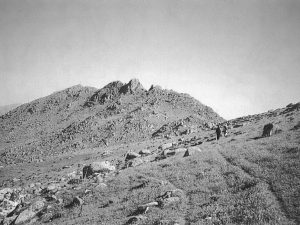
Fig. 1. The southern flank of the Ālā Dāgh mountain overlooking the village of Shisheh. The inscribed panel lies at the foot of the triangular peak (after Bashash Khanzaq, Biscione, Hejebri-Nobari, and M. Salvini, “Haldi’s Garrison-Haldi’s Protection,” p. 28, fig. 2)
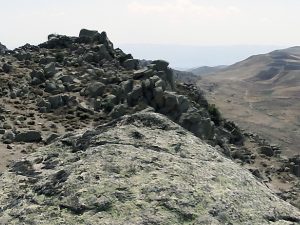
Fig. 2. The peak of the mountain where the inscription is located (photo: M. Dara, published in Katibehāy-e Mikhiy-e Uratu’i az Iran, p. 118)
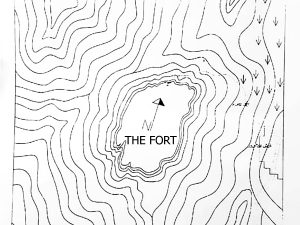
Fig. 3. The unscaled sketch plan of the fort (after Omrani and Rahmatpour, Qal’ehā va esthehkāmāt-e Azarbaijān, p. 78, fig. 32)
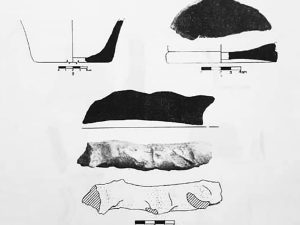
Fig. 4. Potsherds from the fort area (after Omrani and Rahmatpour, Qal’ehā va esthehkāmāt-e Azarbaijān, p. 80, fig. 33/2)
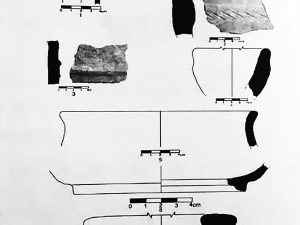
Fig. 5. Potsherds from the fort area (after Omrani and Rahmatpour, Qal’ehā va esthehkāmāt-e Azarbaijān, p. 79 fig. 33/1)
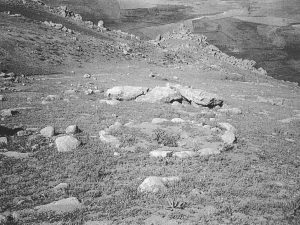
Fig. 6. Tombs marked by stone circles (after Bashash Khanzaq, Biscione, Hejebri-Nobari, and M. Salvini, “Haldi’s Garrison-Haldi’s Protection,” p. 30, fig. 5)
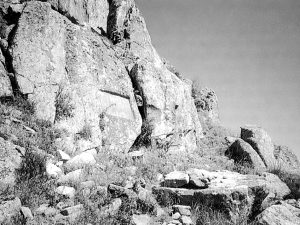
Fig. 7. The inscription of Argishti II on the eastern face of the cliffside in 2000 (after Bashash Khanzaq, Biscione, Hejebri-Nobari, and M. Salvini, “Haldi’s Garrison-Haldi’s Protection,” p. 30, fig. 6)
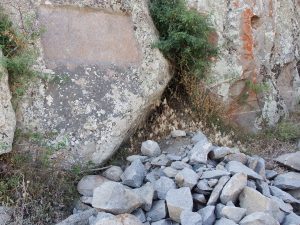
Fig. 8. The inscribed panel in 2014 (photo: M. Dara, published in Katibehāy-e Mikhiy-e Uratu’i az Iran, p. 118)
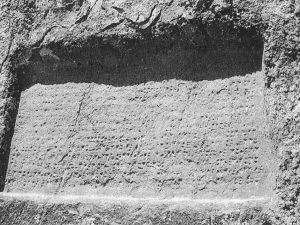
Fig. 9. The inscription in 2000 (after Bashash Khanzaq, Biscione, Hejebri-Nobari, and M. Salvini, “Haldi’s Garrison-Haldi’s Protection,” p. 32, fig. 7)

Fig. 10. The inscription in 2014 (photo: M. Dara)
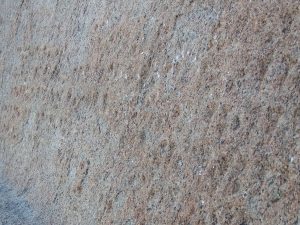
Fig. 11. The eroded and damaged surface of the inscription in 2014 (photo: M. Dara, published in Katibehāy-e Mikhiy-e Uratu’i az Iran, p. 117)
Archaeological Exploration
The presence of an Urartian inscription near the village of Shisheh was first reported by Alireza Hojabri Nobari, professor of archaeology at Tarbiat Modares University in Tehran, during a field trip to the region in 1998. Two years later, he led a team of archaeologists and epigraphists to the site. The result of their surveys and studies was published in 2001 (Bashash Khanzaq, R., R. Biscione, A. Hejebri-Nobari, and M. Salvini, “Haldi’s Garrison-Haldi’s Protection. The newly found rock inscription of Argišti II in Shisheh, near Ahar”). In 2009, Behrouz Omrani and Mohammad Rahmatpour visited the site, made a sketch plan of the fort, and examined the potsherds (Omrani and Rahmatpour, Qal’ehā va esthehkāmāt, pp. 76-80). Finally, in 2014, Maryam Dara of the Iranian Research Center for Linguistics, Inscriptions, and Texts carefully examined the inscription and recorded its state of conservation (Dara, Katibehāy-e Mikhiy-e Uratu’i az Iran, pp. 117-123).
Bibliography
Dara, M., Katibehāy-e Mikhiy-e Uratu’i az Iran, Tehran, 1396/2017.
Omrani, B. and M. Rahmatpour, Qal’ehā va esthehkāmāt-e Azarbaijān, Tehran, 1387/2008.
Salvini, M., Corpus dei Testi Urartei, vol. 1: Le iscrizioni su pietra e roccia (Documenta Asiana 8), Rome, 2008.

































































































































